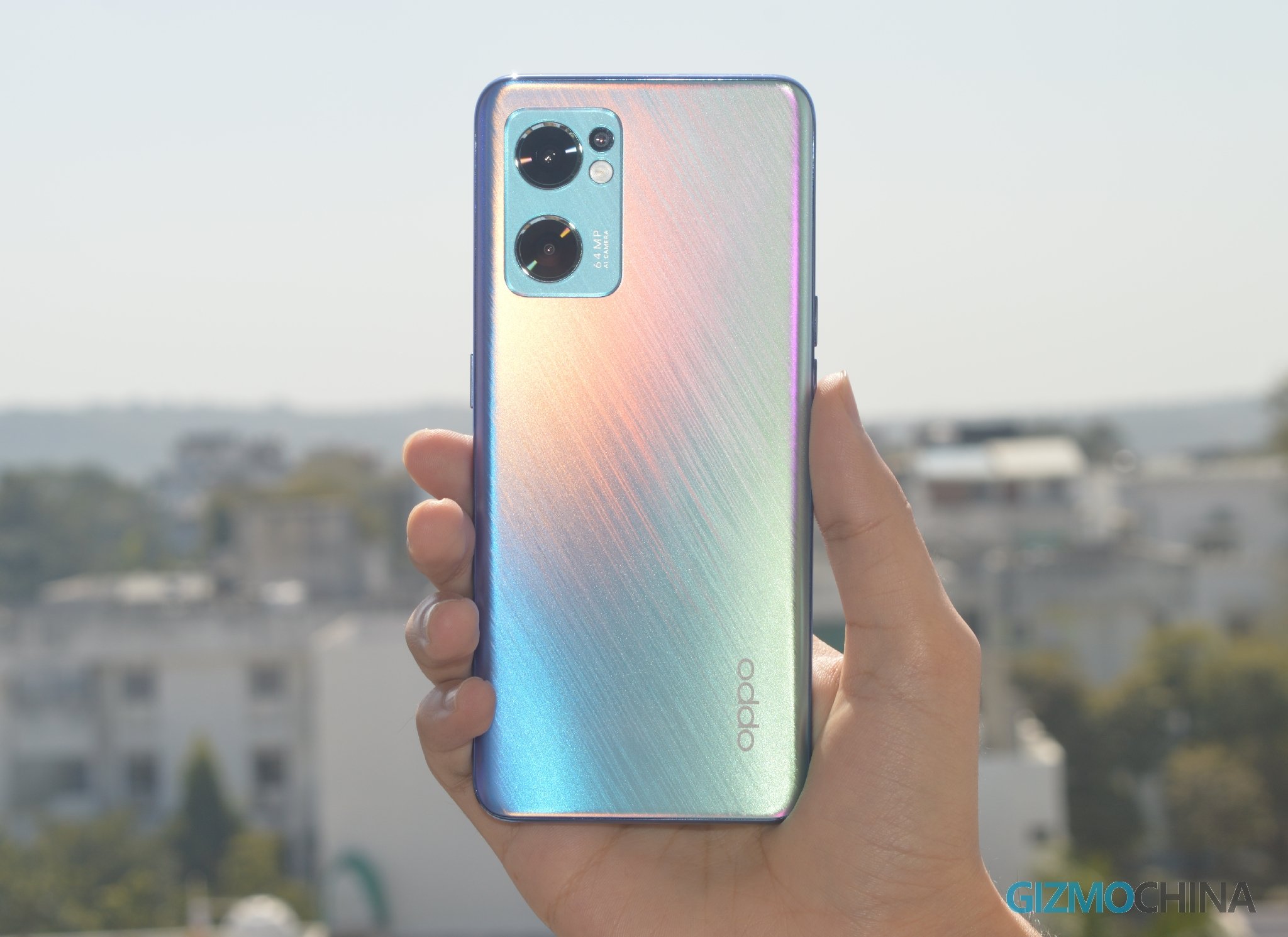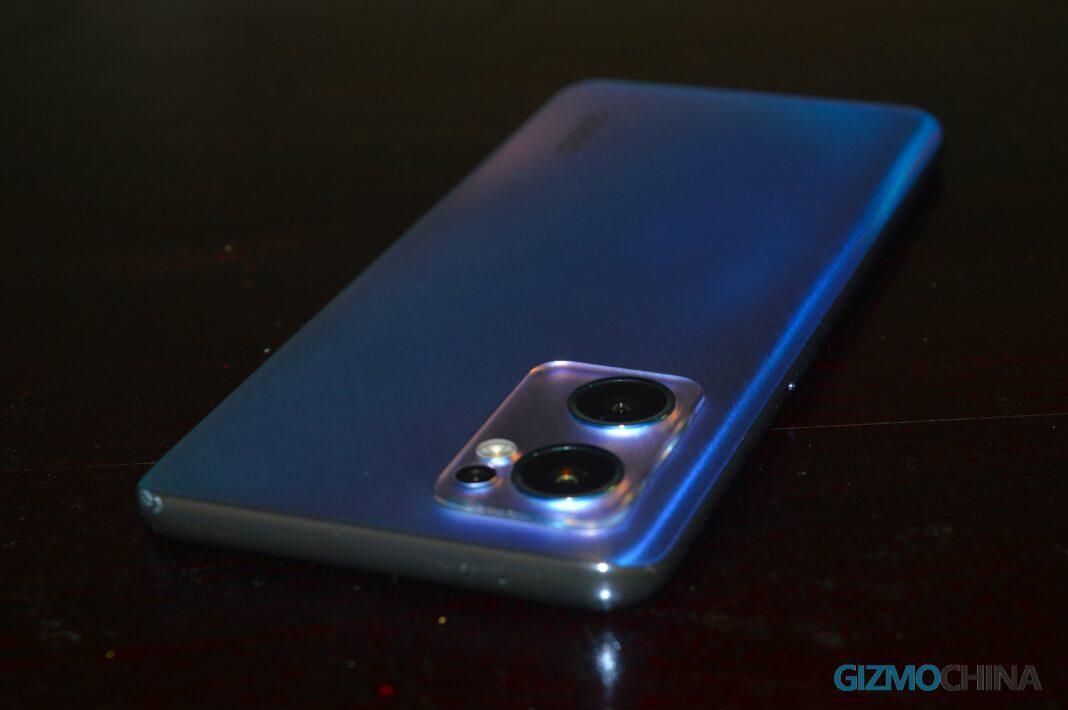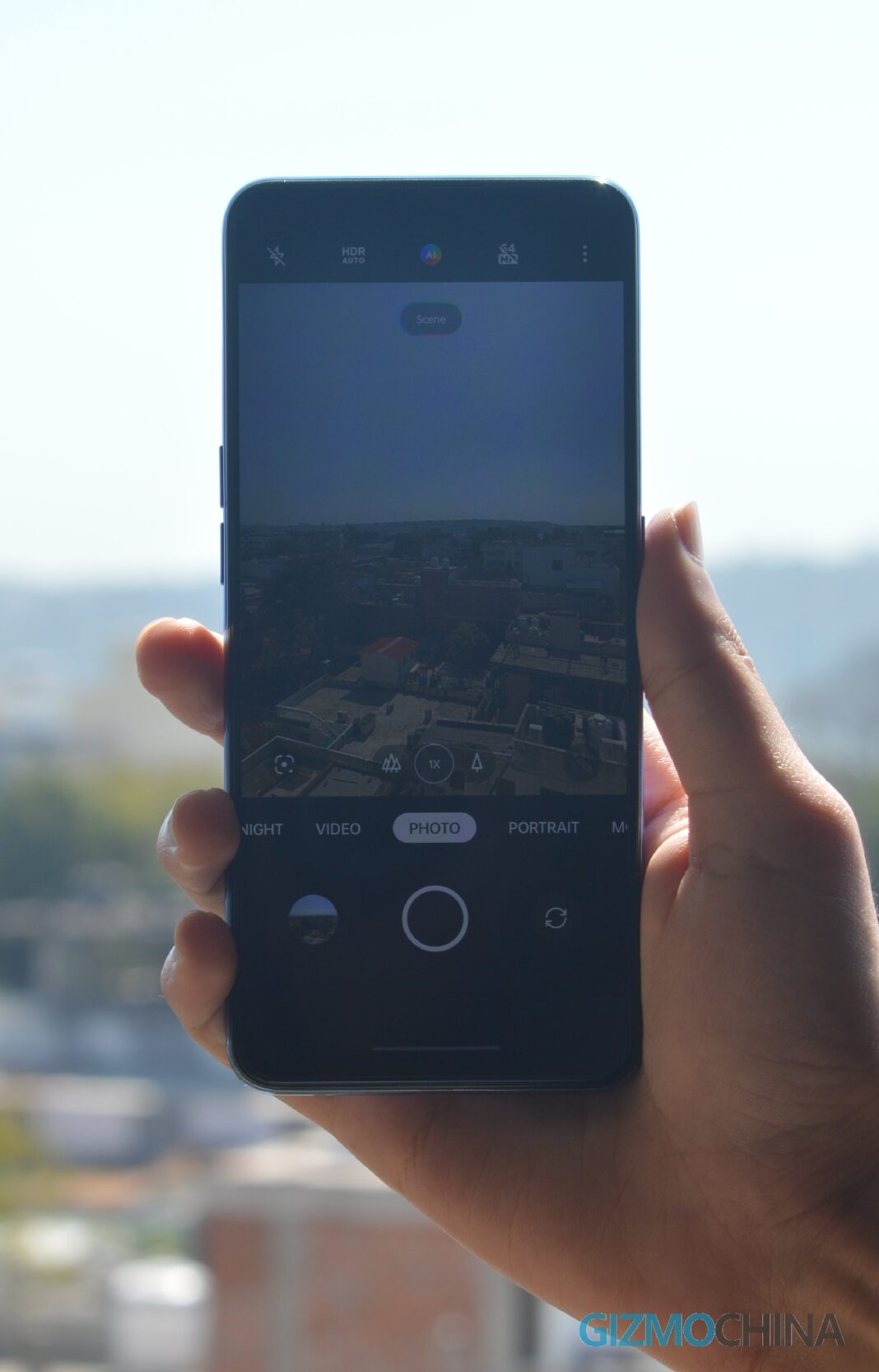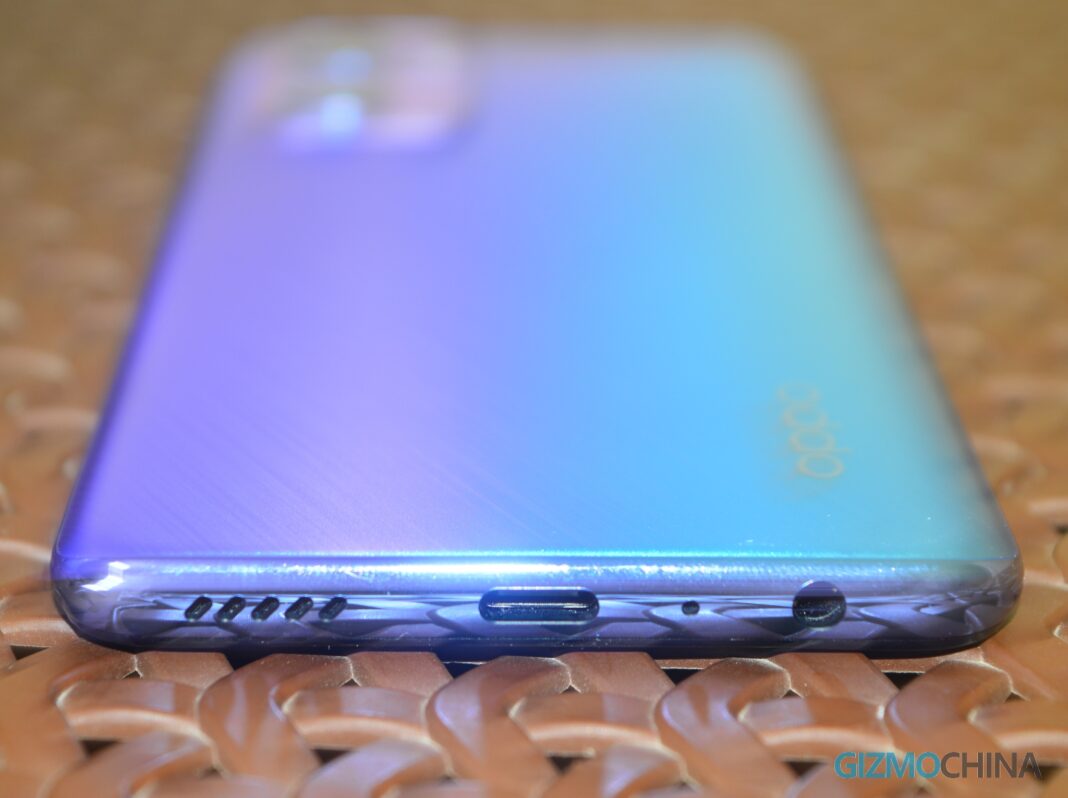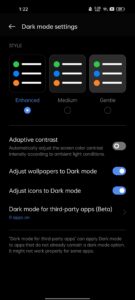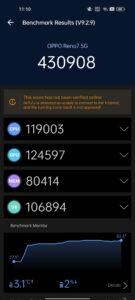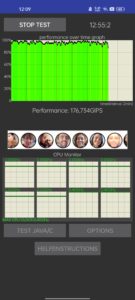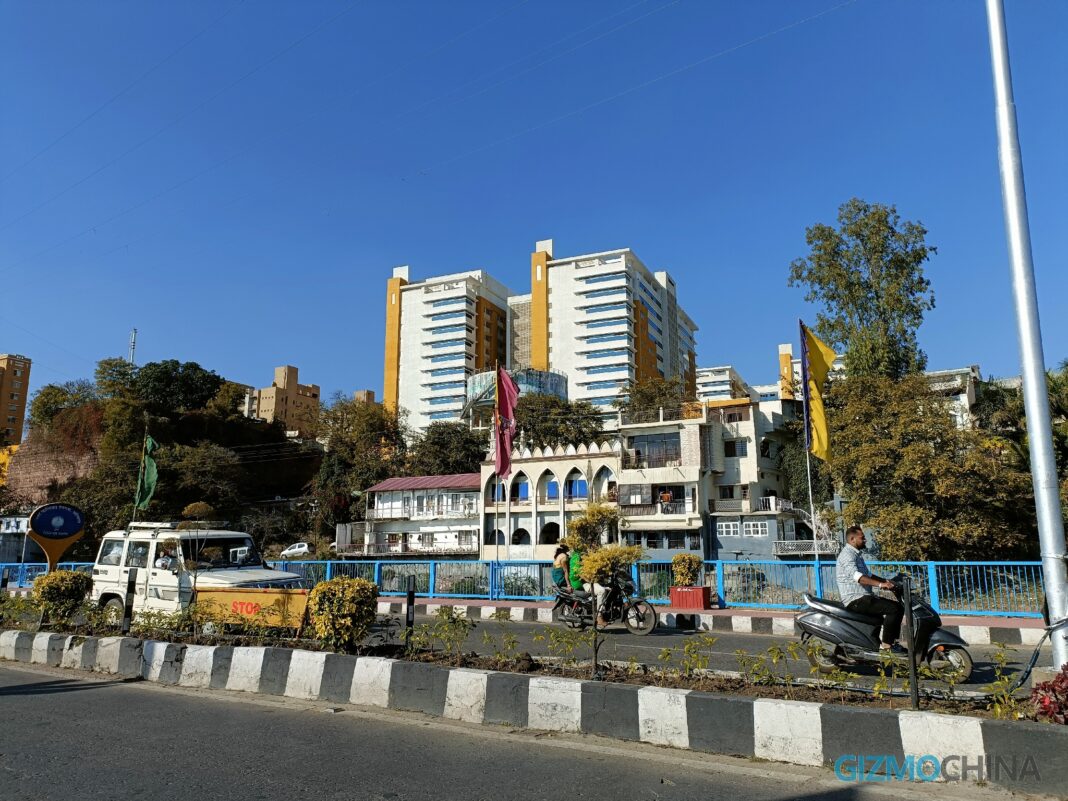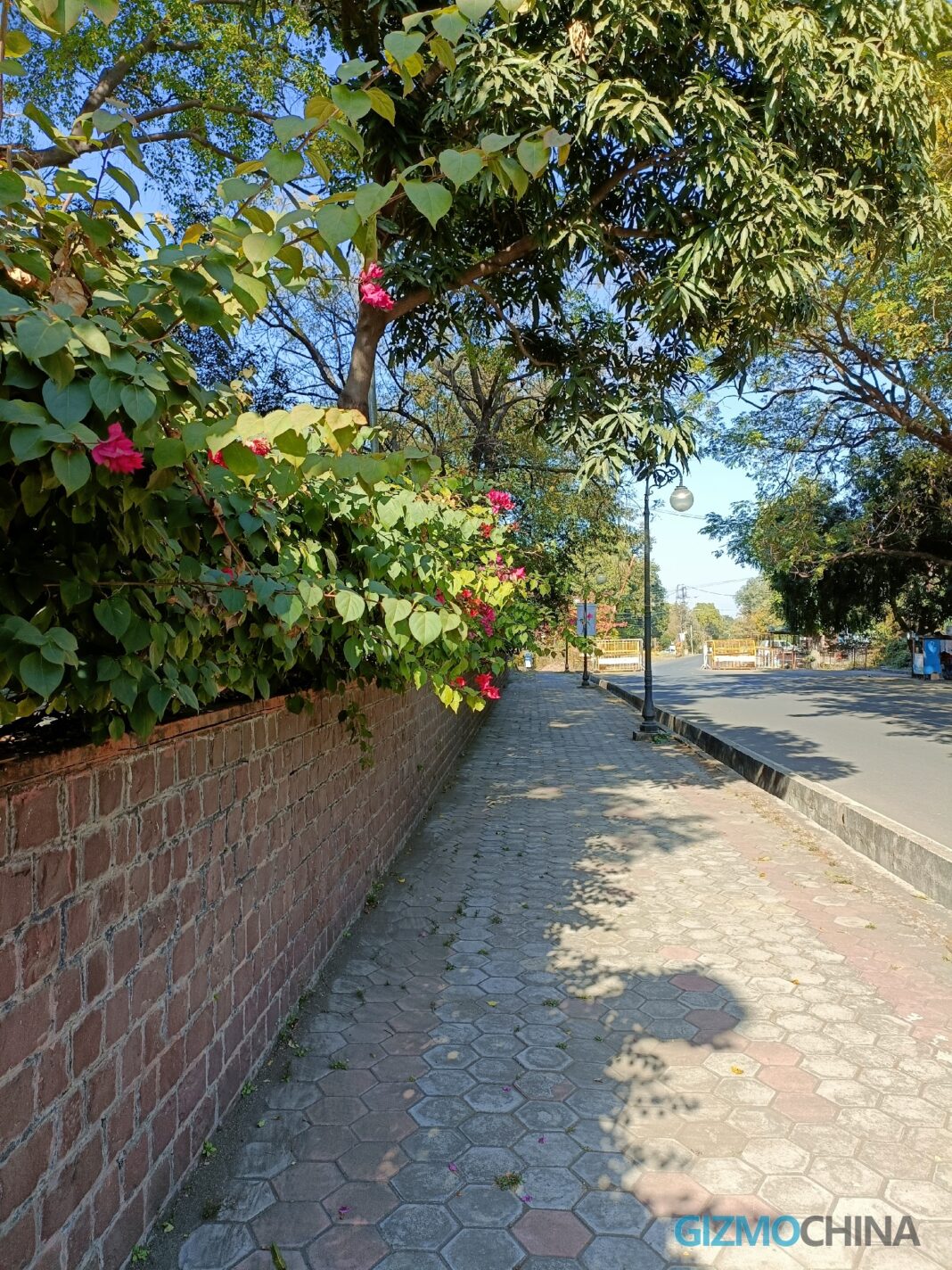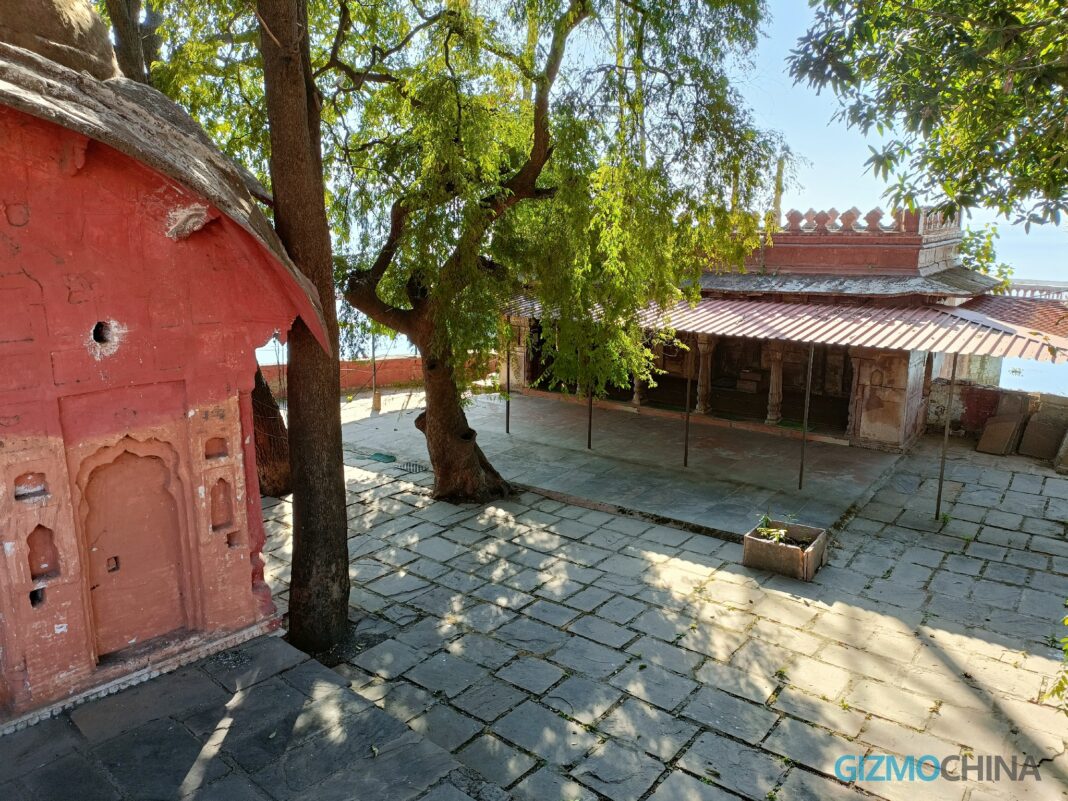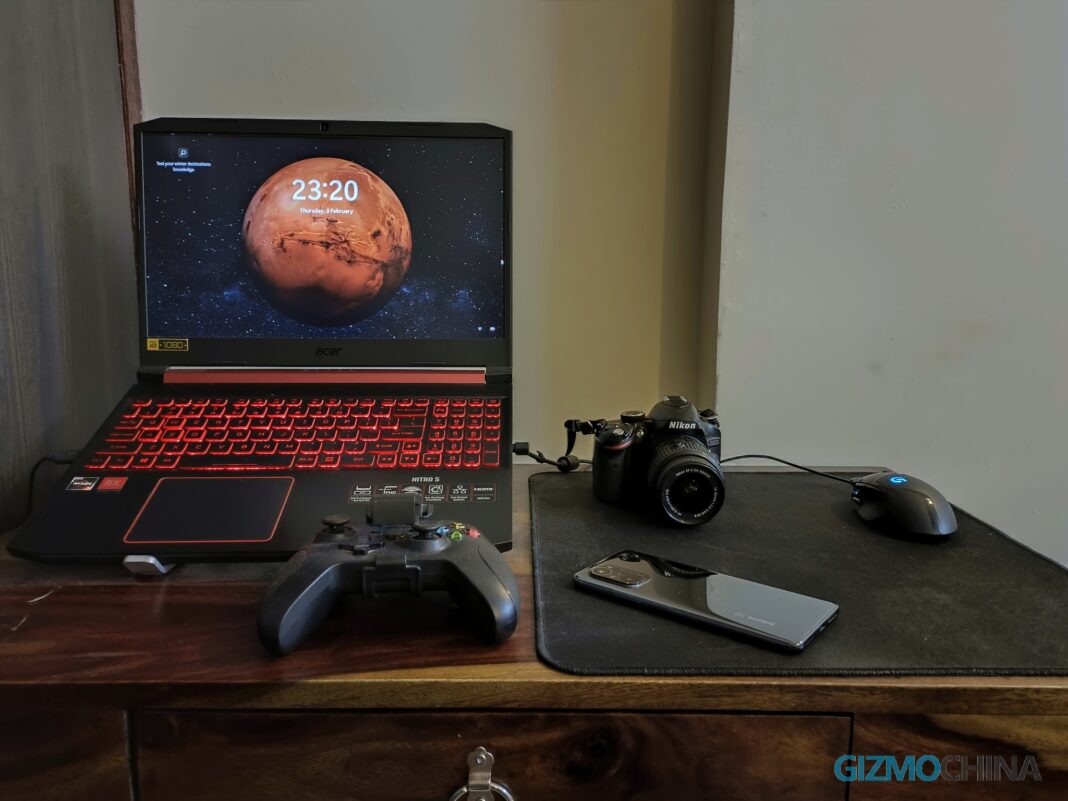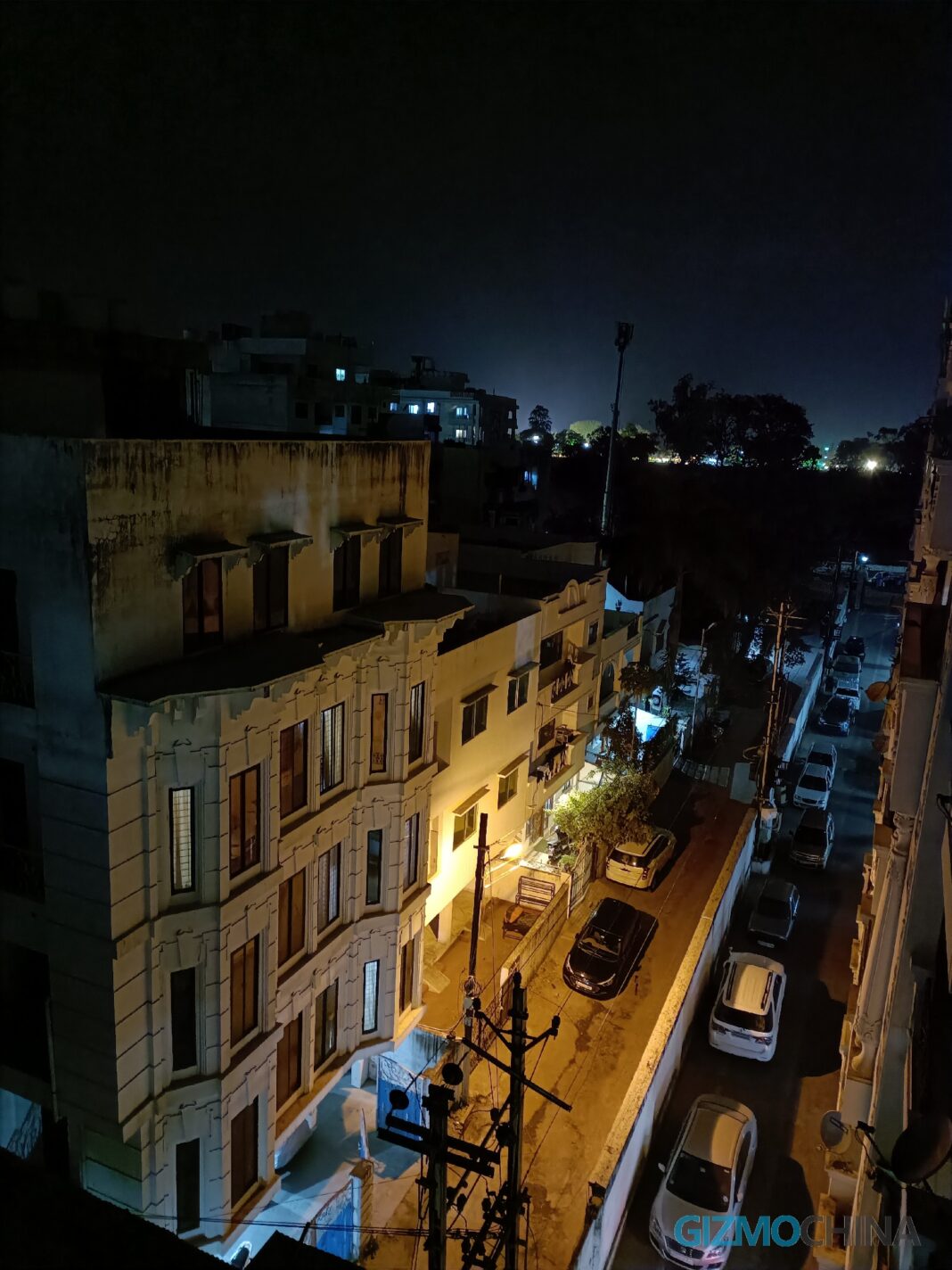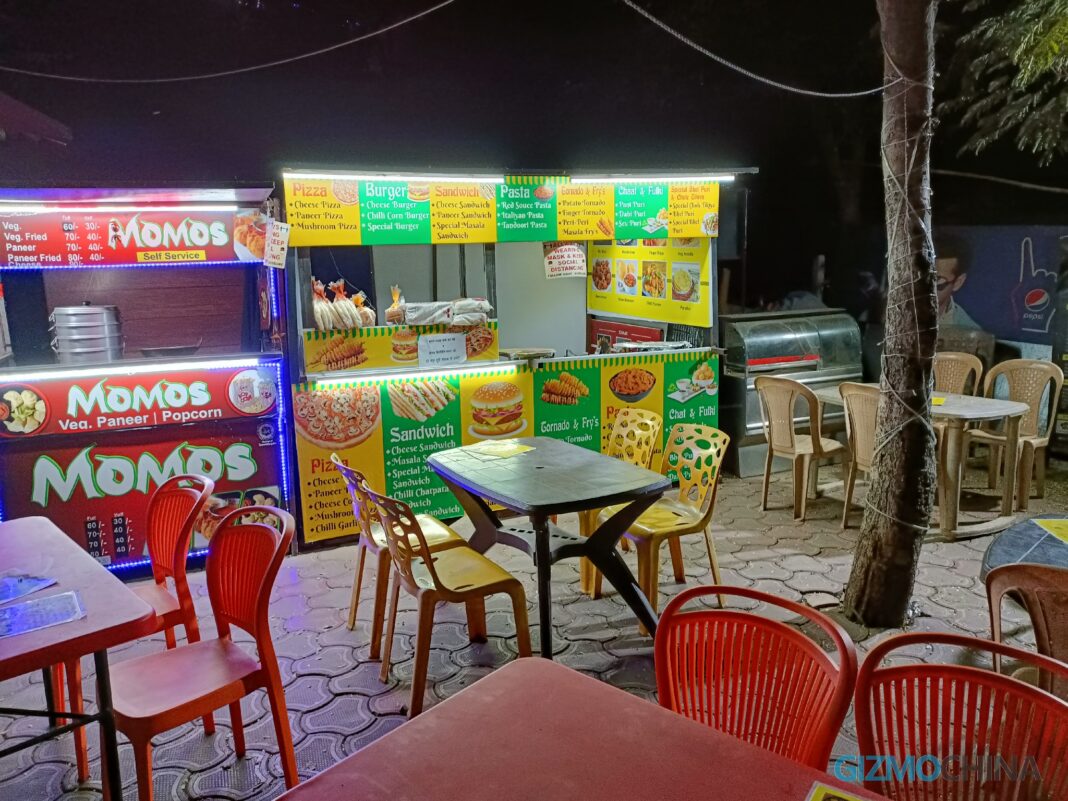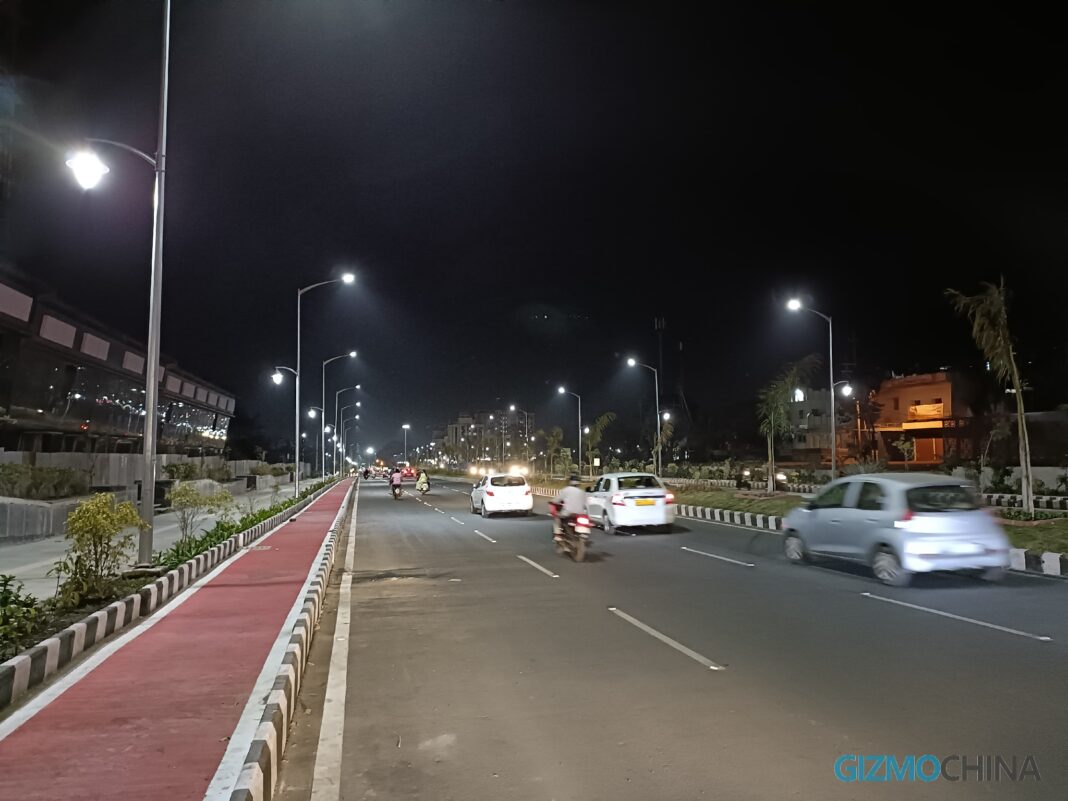OPPO’s Reno lineup has become sort of a bridge between mid-rangers and flagships, bringing great specs and premium designs at prices that don’t exactly undercut the competition. And as its latest iteration commences its global journey starting with India on February 4th, we put its more affordable offering – OPPO Reno7 5G – to the test to see if its Rs 28,999 price tag is truly worth the surcharge.
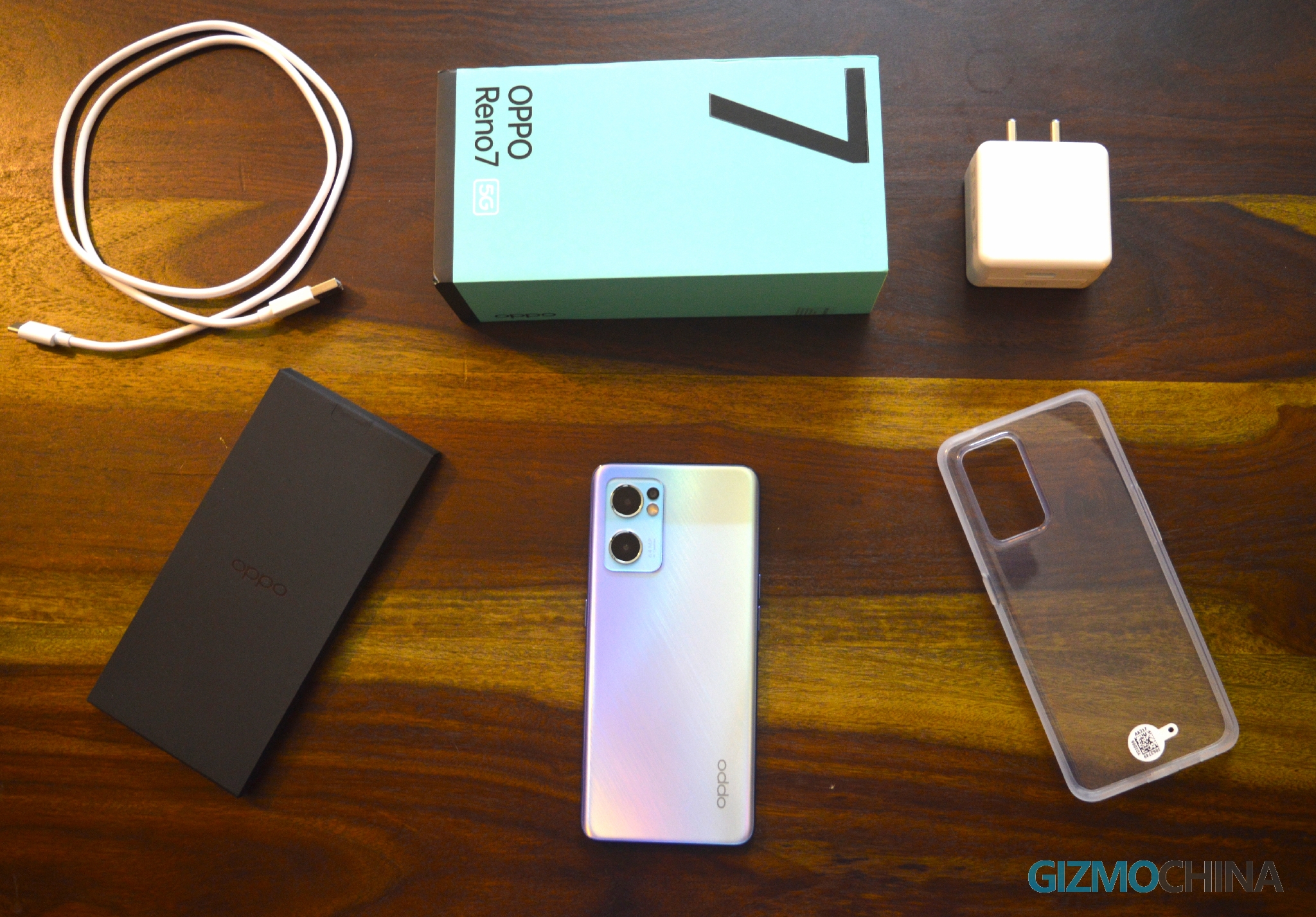
OPPO Reno7 5G Review: Design
Unlike the Reno7 Pro, the standard model opts for a plastic frame, although the overall design is just as attractive. The review unit I received is painted “Startrails Blue” and turns into quite the light show when moved around under the sun. There’s some glitter action going on, paired with a pattern that has been inspired by star trails. OPPO says that a dual-texture, dual-coating layer has been introduced to the rear AG glass panel to give the phone two different layers of color – and it does result in a gradient finish.
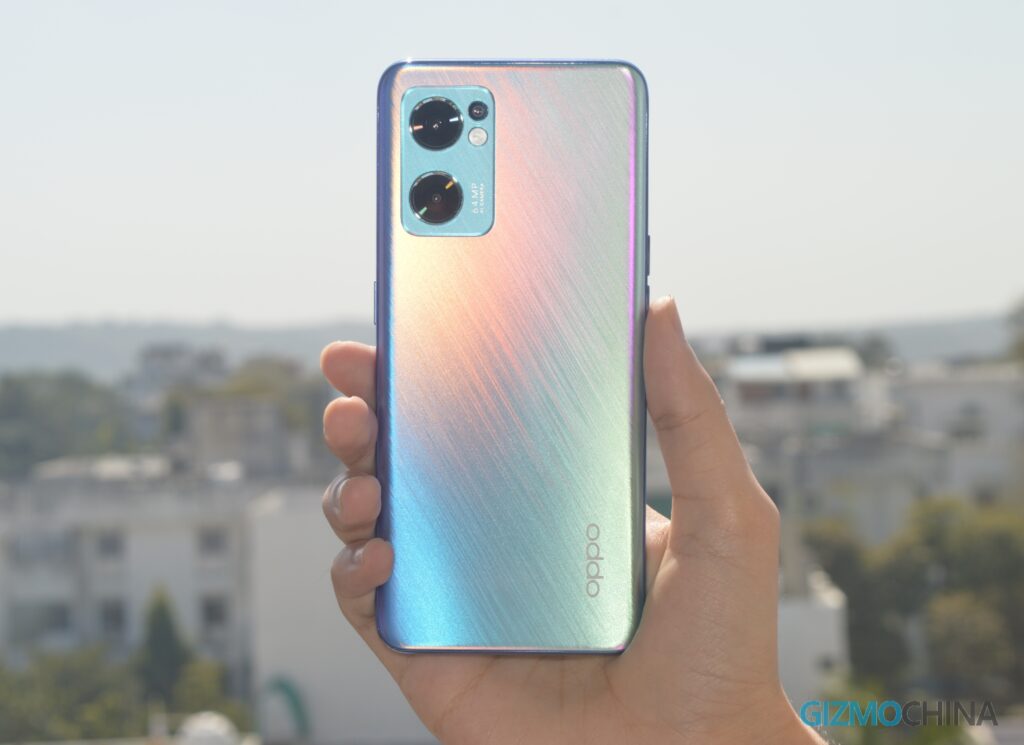
But what good are looks if not complemented by a great in-hand feel? Thankfully, the Reno7 is quite comfy to hold with the textured rear providing optimal grip. The 6.4” display size is a sweet spot for me, allowing for a great viewing experience without compromising much on single-hand usage. One can even argue that the device’s size and weight are one of its biggest selling points. In a market that’s currently dominated by 200g+ 6.7”+ behemoths, the Reno7’s 173g weight and 7.81mm thickness sure do feel like a breath of fresh air.
However, OPPO’s design choices get more interesting when last year’s Reno6 is brought into the picture. The older model had gone for a plastic back + metal frame build with flat edges and looked arguably more premium. OPPO has kept the boxy look a Pro model-exclusive this year but those familiar with it would argue that rounded designs are comfier in hand.
But there’s also the case of the bezels. The Reno7’s bezels appear to have grown all around compared to last year’s Reno6, and this, unfortunately, is something I can’t forgive. You could say a large chin is the arch-nemesis of premium designs and is definitely not something you’d expect from a 2022 mid-ranger.
Display
The OPPO Reno7 5G, as already stated, sports a 6.4-inch OLED panel with a 90Hz refresh rate. Colors are crisp, sunlight legibility is passable, tint issues are non-existent, but there are a couple of snags – HDR10 support appears to be missing and the 90Hz refresh rate loses out to the 120Hz display-brandishing rivals at the same price point. Still, the difference between 90Hz and 120Hz isn’t all that much, and the overall experience is buttery smooth.
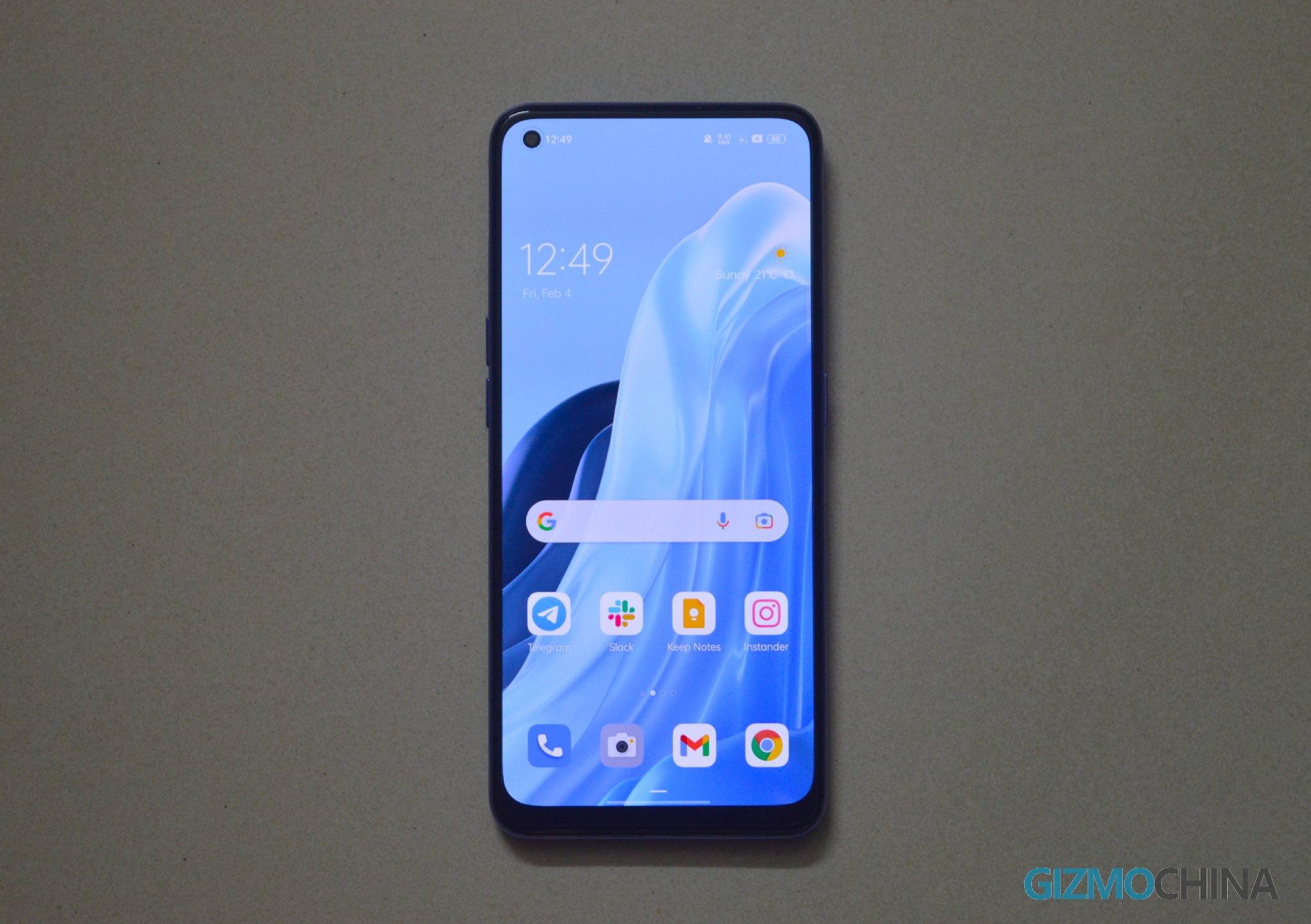
The display also houses a fingerprint scanner underneath. It’s fast enough for an optical sensor, has high accuracy, and misreads are rare.
Software
The OPPO Reno7 5G boots into ColorOS 12 based on Android 11 out of the box and the software is by far the most impressive feature of the phone to me. The latest version of OPPO’s software skin is both fairly feature-rich yet minimal at the same time, and feels rock-stable. I didn’t run into any lags or bugs during my week-long usage, which honestly has become a luxury lately.
Pushing stability aside, another great perk of ColorOS 12 is the customization that it offers without warranting the use of the clunky built-in Theme Store. The ‘Personalizations’ menu within Settings allows you to customize the OS to your heart’s content and spans icons, always-on display, wallpapers, font, fingerprint animation, and quick settings. If you’re not digging the default look, then playing around with Personalizations a bit can even help you achieve something more akin to stock Android. Just take a look at the screenshots below (click to enlarge) to get a better idea of what I’m talking about.
Do keep in mind that the first boot will land you into plenty of bloatware that includes stuff like ‘Moj.’ All of it can be uninstalled, thankfully, and OPPO even goes a step further by giving users the ability to disable almost every system app.
The only catch here is the lack of Android 12 out of the box but OPPO will hopefully be rolling out the version soon.
Benchmarks and Gaming
The Reno7 5G reuses the good old MediaTek Dimensity 900 from its predecessor, which isn’t necessarily a bad thing. App launching speeds and scrolling performance is impressive, and we wouldn’t blame you if you end up thinking that the phone packs a flagship chip under the hood.
Contrary to popular opinion about MediaTek, the chip rarely seems to heat up, resulting in a consistently cool back panel. PUBGM/BGMI is a joy to play at Smooth + Extreme settings, although increasing graphics quality any further drops the frame rate down to ‘Ultra.’ But nope, no sign of heating or lags at all here either, and touch response is great too.
The speaker performance is quite disappointing, though. I could’ve let the lack of stereo speakers slide if the single bottom-firing unit had been of adequate quality, but nope, they sound average at best and get tinny at higher volumes. The lack of Dolby Atmos doesn’t help either.
The Reno7 5G scores 430,908 on AnTuTu which positions it somewhere between the Snapdragon 765G and Snapdragon 778G. The 778G is still noticeably more powerful though, especially when it comes to graphics, and is actually a common chip in the price segment.
On Geekbench 5, you get scores of 727 and 2,190 on single-core and multi-core tests, respectively, that are fairly adequate for a mid-ranger.
Battery
The Reno7 5G runs on a 4,500 mAh battery, which is slightly larger than the 4,300 unit on its predecessor. A full day’s use is guaranteed if you’re not gaming, and peeps who use smartphones as modern-day bar phones should get much better results.
There is one concern, however. I found overnight battery drain a bit higher than usual, with the phone losing 1% for each hour it’s left alone brooding. This can be forgiven considering the device is running its very first software build, but OPPO, if you’re reading this, please fix.
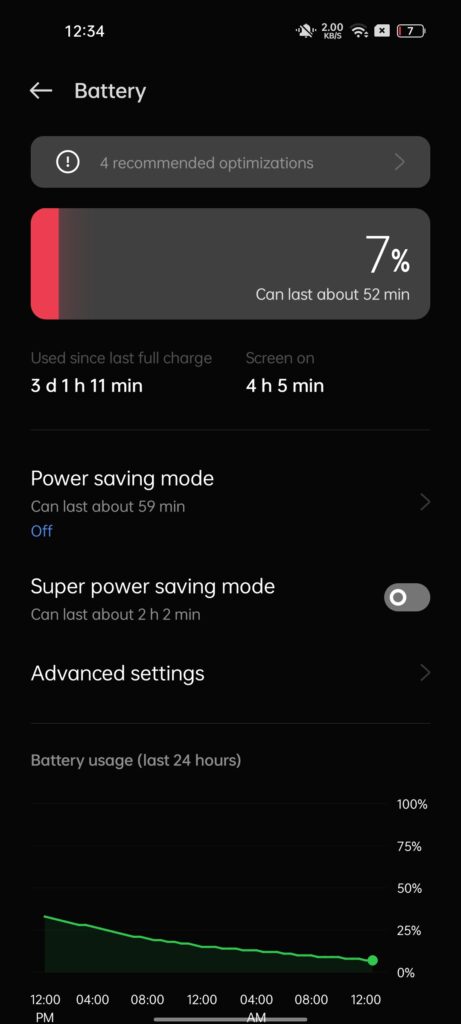
The slight battery drain is made up for by charging speeds that totally smoke the competition. 65W is no joke, and it’s almost mesmerizing to see the battery percentage climb by 1 every few seconds. 0-100 takes around 30 minutes, which sits perfectly in line with OPPO’s own claims.
OPPO Reno7 5G Review: Cameras
The triple camera setup at the rear is decent for the price and comprises a 64MP main camera, an 8MP wide-angle camera, and a 2MP macro camera. The app is fairly extensive, covering almost every aspect of mobile photography. Daylight shooting through the primary lens lands you some pleasing, Instagram-ready images, thanks to an elaborate AI mode that makes useful tweaks per the scene. Colors are fairly natural overall, although skies can appear a bit bluer than they actually are.
But that’s not to say that the primary unit is flawless. Details are my main gripe with the shooter — many images, particularly of wider landscapes, lose their clarity upon zooming in. The 64MP mode does help overcome the shortcoming a little but its scope is limited.
The 8MP ultrawide camera clicks images that are more or less comparable to the primary shooter in terms of colors, dynamic range, and contrast. Still, having a less dense pixel count means that image details are even more scarce upon zooming, but you should be just fine posting them on your socials.
Next up is the 2MP macro lens, and unlike the other two rear sensors, this one’s truly useless. Not only does it have trouble focusing on subjects up close, which is exactly what it was built for, but results are quite blurry and not at all serviceable. You’d be better off zooming in on subjects from the 64MP unit, which makes me wonder why OPPO bothered bundling such a bog-standard macro in the first place.

Night photography is a combo of heavy processing and plenty of oversharpening, but switching to the dedicated Night mode addresses most of the concerns from the default mode. A point of bother here are subjects like street lights spreading all over the images and some lens flaring, and that’s something that doesn’t appear to be the kind that can be fixed by software processing.
The OPPO Reno7 5G offers up to 4K 30 FPS video recording, but dropping it to 1080p grants access to the “Ultra Steady” EIS mode, which is most impressive. Also supported is “Bokeh Flare Portrait Video” which blurs the background in real-time when it detects a human subject in a video. Good stuff.
OPPO Reno7 Review: Verdict
The OPPO Reno7 5G lacks the more-premium design of its Pro sibling (our review here) and also gives a miss to that pretty light-up camera module. But for around Rs 10,000 less, it offers better value for money. The Dimensity 900 chip shows around 50% lower benchmark scores than flagship models but performs just as well in day-to-day tasks.
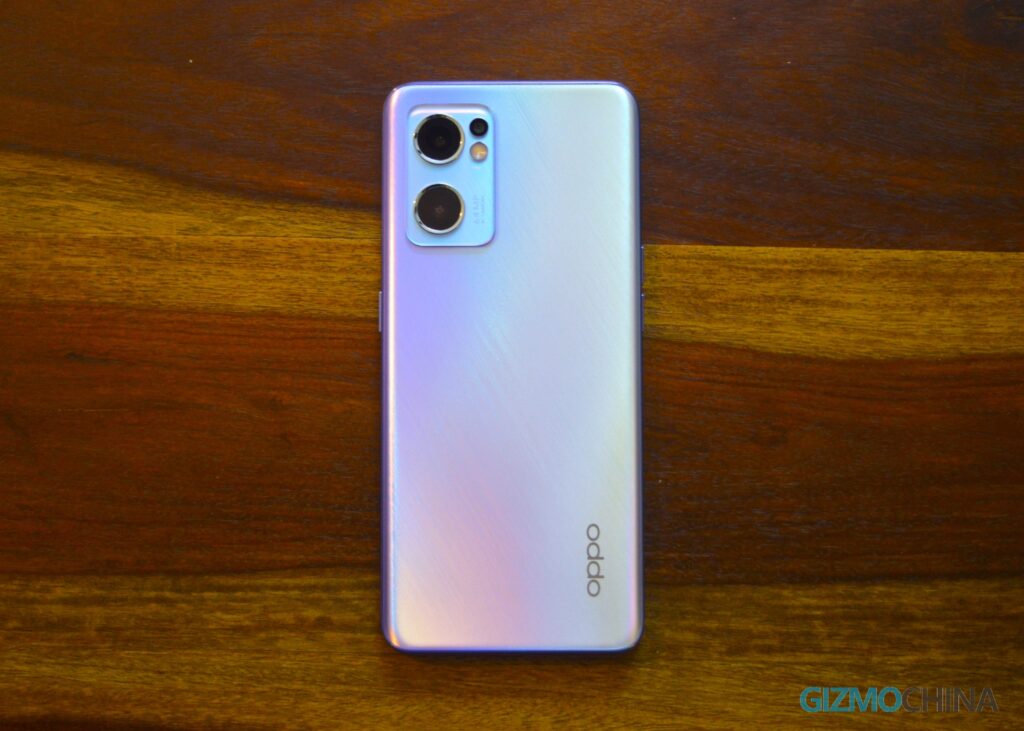
However, things get more interesting when the competition is reeled in. You get offerings like the Xiaomi 11 Lite NE and the Samsung Galaxy M52 5G that seem to offer more, at least in terms of performance, at over Rs 3,000 less. But none of them offer 65W fast charging, and some may also prefer the Reno7’s flashy design.
There’s also the case of the Reno6 5G that carries a near-identical spec-sheet despite being a year old. The device boots into Android 11 out of the box just like the Reno7, meaning both should get updated up to Android 13. Its price may be Rs 1,000 higher but that doesn’t stop it from being a great alternative to its successor.
All in all, the OPPO Reno7 5G is no all-rounder, but if design, software experience, battery life, and charging are your thing, then you’re in for a treat.

